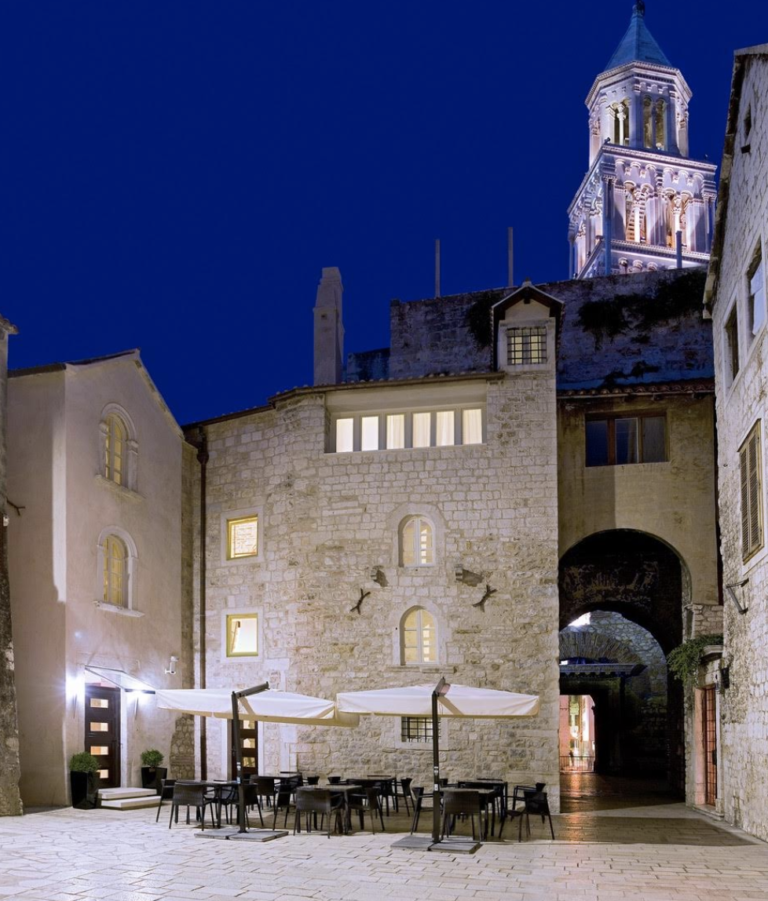The Legendary Dubrovnik City Walls
The city walls are one of Dubrovnik’s iconic features, and have been so for nearly a thousand years. Throughout history, these walls have withstood army after army, and even survived fires and earthquakes that devastated Dubrovnik in the 13th and 17th centuries. They are the pride and jewel of the city.
About
The incredible walls of Dubrovnik surround the old heart of the city. 1,940 meters long, a tour of the walls takes you from the high point of Minceta Fortress overlooking the city, to the rocky beaches along the harbor, where you can see sailors and ships on the Adriatic Sea. The walls range from 4 – 6 meters thick, reaching up to 25 meters in height.
History
These walls have been protecting Dubrovnik since the Middle Ages, and have never fallen to a hostile power. They were constructed from the 12th through the 17th centuries, evolving gradually from wooden palisades to the massive fortifications seen today. However, some form of fortifications precede even these records, as Dubrovnik is known to have survived a 15 month invasion by the Saracens in the 9th century. In 1292, the port was devastated by a fire, and in the rebuilding, the current form of the old town took shape, and was completely encircled by the walls in the 13th century.
During the 14th and 15th centuries, the walls were reinforced and construction continued as the city faced different threats from invaders. After a devastating earthquake in 1667, the walls were among the few monuments left untouched. Dubrovnik is a city with a long history of being under siege, even as recently as 1992, and these walls continue to be vital to the identity and safety of the city.
City Wall Gates
The city originally had four gates, two facing the land and two facing the harbor. The Buža Gate was only added in the 1900s during the rule of the Austro-Hungarian Empire.
Pile Gate: The main entrance into the Old Town of Dubrovnik is through the Pile Gate. Once guarded by a moat, the Pile Gate is reached by a stone bridge. The bridge once ended in a wooden drawbridge that used to be closed every night. The Pile Gate has Gothic arches and is topped by a statue of Saint Blaise, the patron saint of Dubrovnik.
Ploče Gate: The second main landward access to the city is through the Ploče Gate. The moat-spanning bridges to both Ploče and Pile gates were both designed by Paskoje Miličević in the 15th century, and visitors are again greeted by a statue of Saint Blaise.
Ponte Gate: Near St. John’s Fortress, the Ponte gate was constructed in 1476 and is connected by the wall to St. Johns Fortress.
Fishmarket Gate: The Fishmarket gate dates back to 1381 and is eastward of the Great Arsenal.
Buža Gate: The Gate of Buža is a relatively new entrance to Dubrovnik, dating back only to the early 1900s. The story is that this gate gave Austrian soldiers easier access to the tennis courts outside the walls.
City Wall Fortresses
The walls connect the fortresses and towers that completely surround Dubrovnik, guarding the city from all sides. Continually added on to and strengthened over the centuries, as the tools and techniques of warfare evolved, each of these fortifications is a living record of the history of conflict in the region.
Minčeta Tower: Minčeta is the most prominent defensive tower guarding the north of old Dubrovnik, and the highest point in the walls. Built in 1463, it offers the most unforgettable views of the city, and is one of the most iconic landmarks of Dubrovnik.
Revelin Fortress: Facing the east, Revelin Fortress was pivotal during the devastation and rebuilding of the great earthquake of 1667, when city management and administration were operated from within, and all Dubrovnik’s treasures were transferred to the fortress. Today, the broad rooftop terrace and interior chambers are often used for festivals and parties.
Fort Bokar: Fort Bokar guards the east and presides over the Pile Gate. This beautiful cylindrical tower protects the gate from the rocky shoreline, and offers spectacular views of the sea and the city.
St. Lawrence Fortress: Also known as Fort Lovrijenac, the Fortress of St. Lawrence defends the west, and was crucial in defending the city from Ventian rule. The distinctive design has walls that are 12 meters thick on the ocean side, but only 60cm thick facing the city; this was done so that if the fortress should fall, Dubrovnik’s own cannons could pierce the walls and retake the fortress. Today it houses a theater and many festivals and events are staged here.
Visiting the Dubrovnik City Walls
It takes about 2 hours to walk the city walls of Dubrovnik, and in the summer months it can be both hot and crowded. It is best to visit early in the day to avoid the crowds and the hottest weather, so that you can best enjoy the spectacular views from all points of the walls. The entrance fee to tour the walls includes a tour of Fort Lovrijenac as well.
We know that unlike many of our well-trodden destinations, Croatia may seem like a step out of the comfort zone. But don’t let a few strange letters of their alphabet scare you off! Once you check out our brief eBook about what to expect on your first trip to Dubrovnik, you will realize that it is much more simple that you imagine. Download it right here:
{{cta(‘8408d397-727c-43f2-9e6c-a97a0414b08f’)}}



